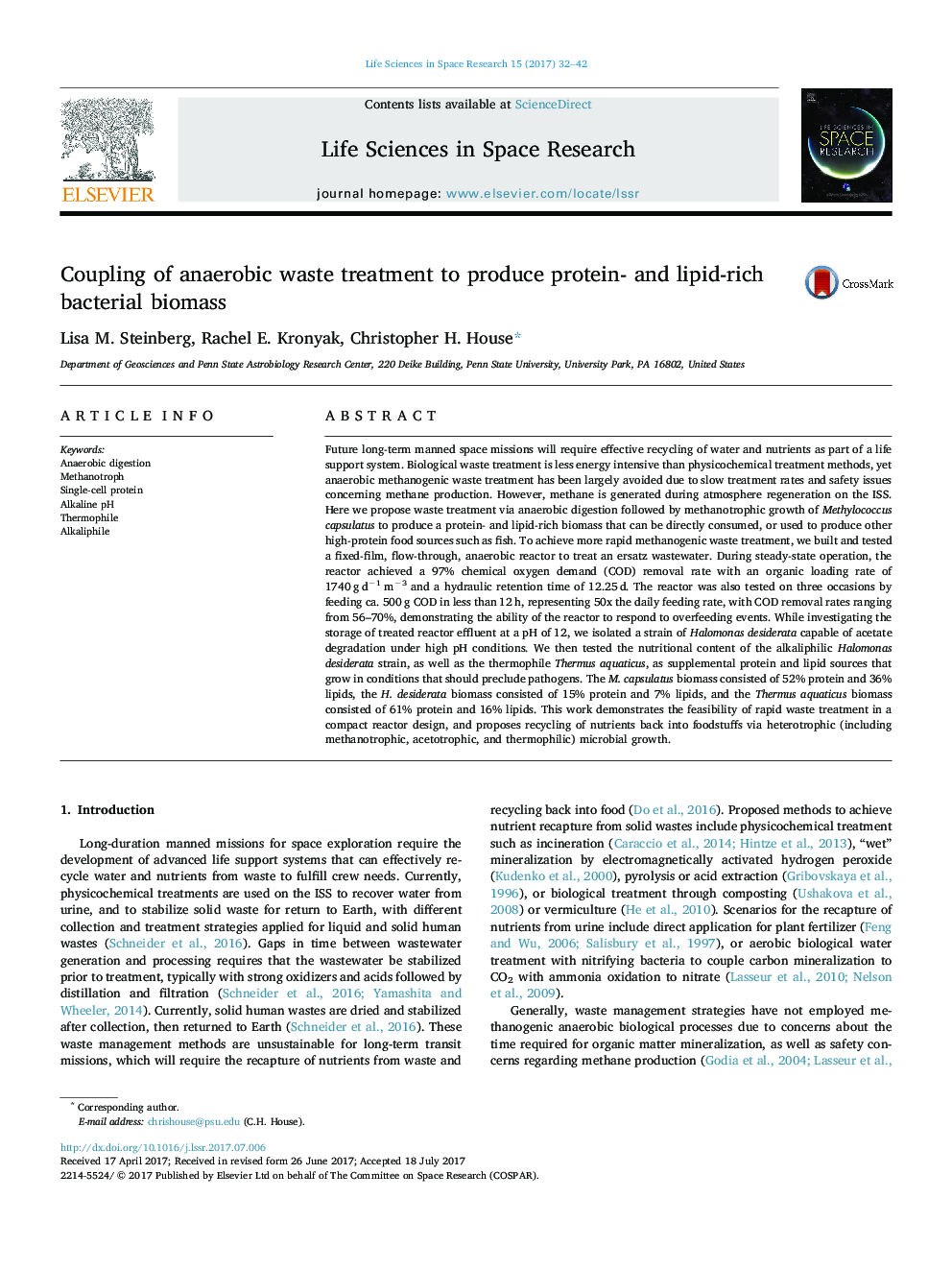| کد مقاله | کد نشریه | سال انتشار | مقاله انگلیسی | نسخه تمام متن |
|---|---|---|---|---|
| 5498082 | 1533309 | 2017 | 11 صفحه PDF | دانلود رایگان |
عنوان انگلیسی مقاله ISI
Coupling of anaerobic waste treatment to produce protein- and lipid-rich bacterial biomass
ترجمه فارسی عنوان
ترکیب زباله های بی هوازی برای تولید بیوماس باکتریایی با پروتئین و لیپید
دانلود مقاله + سفارش ترجمه
دانلود مقاله ISI انگلیسی
رایگان برای ایرانیان
کلمات کلیدی
موضوعات مرتبط
مهندسی و علوم پایه
علوم زمین و سیارات
علوم فضا و نجوم
چکیده انگلیسی
Future long-term manned space missions will require effective recycling of water and nutrients as part of a life support system. Biological waste treatment is less energy intensive than physicochemical treatment methods, yet anaerobic methanogenic waste treatment has been largely avoided due to slow treatment rates and safety issues concerning methane production. However, methane is generated during atmosphere regeneration on the ISS. Here we propose waste treatment via anaerobic digestion followed by methanotrophic growth of Methylococcus capsulatus to produce a protein- and lipid-rich biomass that can be directly consumed, or used to produce other high-protein food sources such as fish. To achieve more rapid methanogenic waste treatment, we built and tested a fixed-film, flow-through, anaerobic reactor to treat an ersatz wastewater. During steady-state operation, the reactor achieved a 97% chemical oxygen demand (COD) removal rate with an organic loading rate of 1740â¯gâ¯dâ1â¯mâ3 and a hydraulic retention time of 12.25â¯d. The reactor was also tested on three occasions by feeding ca. 500â¯g COD in less than 12â¯h, representing 50x the daily feeding rate, with COD removal rates ranging from 56-70%, demonstrating the ability of the reactor to respond to overfeeding events. While investigating the storage of treated reactor effluent at a pH of 12, we isolated a strain of Halomonas desiderata capable of acetate degradation under high pH conditions. We then tested the nutritional content of the alkaliphilic Halomonas desiderata strain, as well as the thermophile Thermus aquaticus, as supplemental protein and lipid sources that grow in conditions that should preclude pathogens. The M. capsulatus biomass consisted of 52% protein and 36% lipids, the H. desiderata biomass consisted of 15% protein and 7% lipids, and the Thermus aquaticus biomass consisted of 61% protein and 16% lipids. This work demonstrates the feasibility of rapid waste treatment in a compact reactor design, and proposes recycling of nutrients back into foodstuffs via heterotrophic (including methanotrophic, acetotrophic, and thermophilic) microbial growth.
ناشر
Database: Elsevier - ScienceDirect (ساینس دایرکت)
Journal: Life Sciences in Space Research - Volume 15, November 2017, Pages 32-42
Journal: Life Sciences in Space Research - Volume 15, November 2017, Pages 32-42
نویسندگان
Lisa M. Steinberg, Rachel E. Kronyak, Christopher H. House,
